9 Proven Strategies for Reducing Health Disparities in Pharmacy Practice
- aPHP

- Nov 23, 2024
- 16 min read
Updated: Jul 18
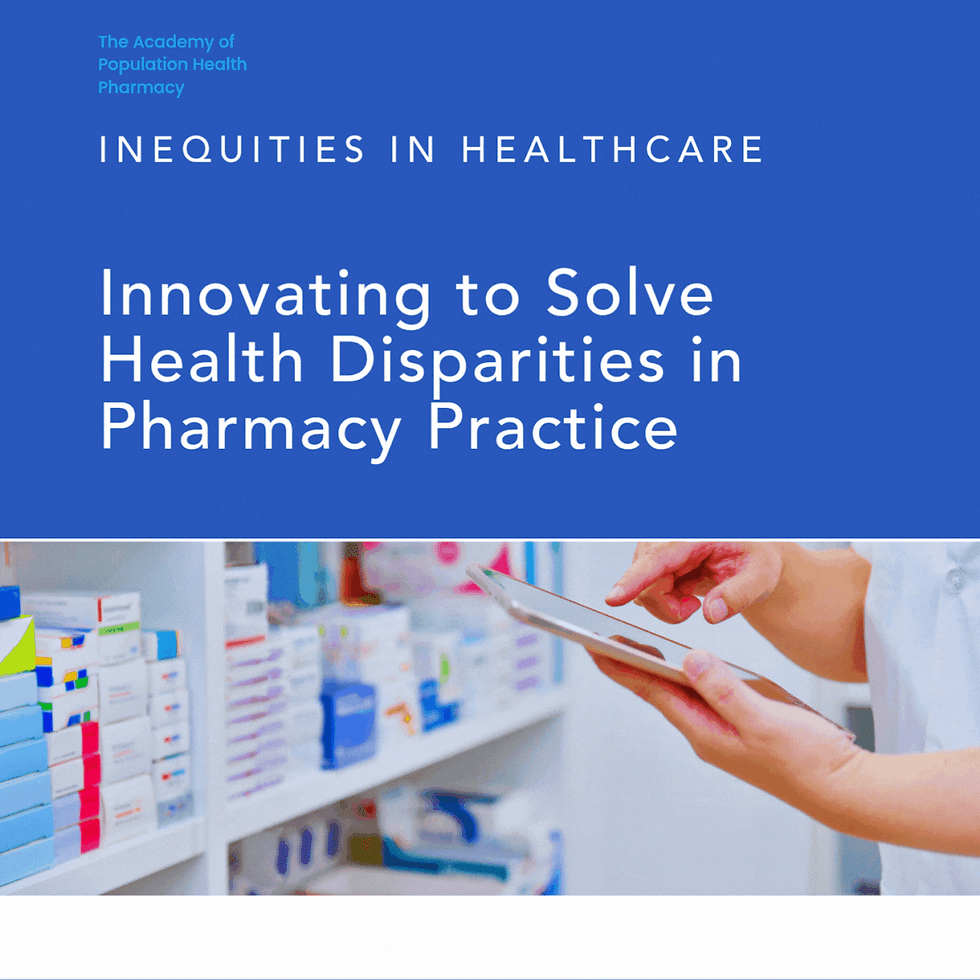
Summary: Pharmacists are breaking new ground in reducing health disparities by leading care models that center equity, access, and real-world impact. This article presents bold population health strategies that close gaps in underserved communities, supported by compelling examples and practical insights. Through pharmacist-led interventions, readers will see how the profession is reshaping care delivery, restoring trust, and driving measurable outcomes in the places that need it most.
Understanding Health Disparities in Pharmacy Practice
Pharmacists play a crucial role in reducing health disparities by helping patients overcome barriers to care, enhancing access to medications, and collaborating directly with communities through proven, real-world strategies.
Many patients face challenges accessing medication counseling, prescription refills, and other essential pharmacy services. These difficulties are particularly prevalent in underserved communities, where pharmacists make a significant impact through tailored support and community-based care.
Disparities tied to income, education, and cultural background often overlap, leading to avoidable differences in treatment and outcomes. These inequities reflect broader systems and policies that determine who receives care, how it is delivered, and when it becomes available.
Factors like housing, transportation, and education, often referred to as social determinants of health (SDOH), continue to widen care gaps. Pharmacists who understand these influences are better equipped to respond with care models that improve health equity.
To deliver more effective and equitable care, pharmacists must also consider how a patient’s lived experience, environment, and personal identity shape their health needs and behaviors.
This article highlights how pharmacists contribute to reducing health disparities by applying population health insights and advancing pharmacist-led care in medically underserved communities.
It also includes insights from Dr. La Kesha Y. Farmer, who shares real-world examples of how pharmacists help create lasting change in their communities.
What Are Health Disparities?
According to the Centers for Disease Control and Prevention (CDC), health disparities are preventable differences that affect an individual’s health outcomes (e.g., mortality, health status, life expectancy) or the person’s ability to achieve optimal health.⁸
Health disparities are usually influenced by a person’s social or economic status, environment, and geographic location.
It is necessary to distinguish between health equity, health disparities, and health inequities to understand health disparities.
Health inequities cause health disparities, defined by the WHO as differences in health outcomes and the distribution of health resources that stem from unfair and unjust systemic policies and practices, which create barriers to health opportunities.³⁰
Health equity, on the other hand, refers to the state in which everyone has a just and fair opportunity to achieve their highest state of health, regardless of social or economic differences or other factors that affect a person’s access to care or health outcomes.⁸
Even though equity is one of several goals of social development,²⁷ health inequities continue to rise in "small but substantial proportions of countries."¹⁴

Key Drivers of Health Disparities Across Populations
Reducing health disparities in pharmacy practice begins with recognizing the upstream drivers that shape access to care, outcomes, and the lived experiences of patients. These drivers, collectively known as social determinants of health (SDOH), include the economic, social, structural, and environmental conditions that influence well-being long before a patient enters the healthcare system.
In population health, understanding these drivers enables pharmacists to identify high-risk groups, apply equity-focused interventions, and close systemic gaps. Each of the factors below contributes to disparities observed across ethnic groups, income levels, geographic areas, and educational backgrounds.
Together, they reveal how intersectionality through overlapping identities, structural inequality shaped by systemic barriers, and social context grounded in lived experience must inform pharmacist-led care strategies.
Education Inequality.
According to the CDC, a clear link exists between education level and health risk.⁸ Individuals with lower educational attainment are more likely to experience obesity, unintentional injury, and chronic illness.⁸
Individuals with higher levels of education are more likely to understand and apply health information, thereby improving their ability to make informed healthcare decisions.¹³ Educational inequality contributes directly to health disparities and limits access to care, particularly in communities already affected by structural inequalities.¹³
Environmental Conditions.
Environmental conditions, such as poor air quality, contaminated water, lack of green space, or proximity to industrial pollution, contribute to health risks and chronic disease.²⁹
Historically underinvested communities are more likely to experience environmental hazards, which amplify disparities in respiratory illness, cancer risk, and cardiovascular outcomes.²⁹
Ethnic Disparities
Ethnic health disparities are avoidable differences in health outcomes experienced by ethnic groups due to systemic bias, unequal resource distribution, and discrimination in healthcare delivery.¹⁸
Even when controlling for income and coverage, populations from historically marginalized ethnic backgrounds face lower quality of care, medication access challenges, and mistrust in the healthcare system.¹⁸
Pharmacists addressing structural inequality in healthcare help close these gaps by delivering culturally responsive care and ensuring equity across pharmacy services.
Individual Factors.
A person’s behaviors, such as smoking, substance use, nutrition, and physical activity, influence health outcomes. However, these individual choices are shaped by social context, access to care, and the lived environment.
For example, someone in a neighborhood without grocery stores or safe sidewalks may struggle to maintain a healthy lifestyle. These behaviors intersect with social determinants and contribute to health disparities across populations.
Intersectionality.
Intersectionality refers to the ways a person’s overlapping identities, such as ethnicity, gender, economic status, disability, or immigration status, compound their experience of oppression or privilege.¹²
In health care, intersectionality helps explain why individuals facing multiple forms of marginalization often experience more severe health disparities. For example, a low-income, Zulu-speaking woman living in a rural area may face overlapping barriers tied to language access, gender bias, economic inequality, and geography.
Pharmacists must embrace intersectionality to deliver care that meets the full complexity of patients’ lived experiences.
Lack of Healthcare Access.
Limited access to healthcare services results from financial barriers, geographic isolation, provider shortages, language differences, and cultural stigma.
Implicit bias and lack of inclusive care further restrict patients’ ability to receive timely and appropriate services, leading to preventable disparities in health outcomes.
Poverty.
Poverty is a powerful predictor of poor health. People with low income are more likely to experience food insecurity, unstable housing, inadequate sanitation, and limited access to medications or transportation.²¹
In rural areas, geographic isolation magnifies these effects, creating healthcare deserts where resources are scarce and outcomes are worse.⁹ ²¹
Structural Inequality
Structural inequality refers to the deeply rooted systems, laws, policies, economic frameworks, and institutional practices that reinforce unequal access to opportunity and health.
This includes pharmacy deserts, where entire communities lack access to pharmacies; healthcare deserts, where medical services are unavailable;⁷ and maternity care deserts, where birthing services are absent or inaccessible.¹⁹ These conditions are often the result of disinvestment in low-income, rural, or minority communities.⁷
Pharmacists addressing structural inequality in healthcare help dismantle these barriers through equity-focused, population health strategies that bring services closer to the communities that need them most.
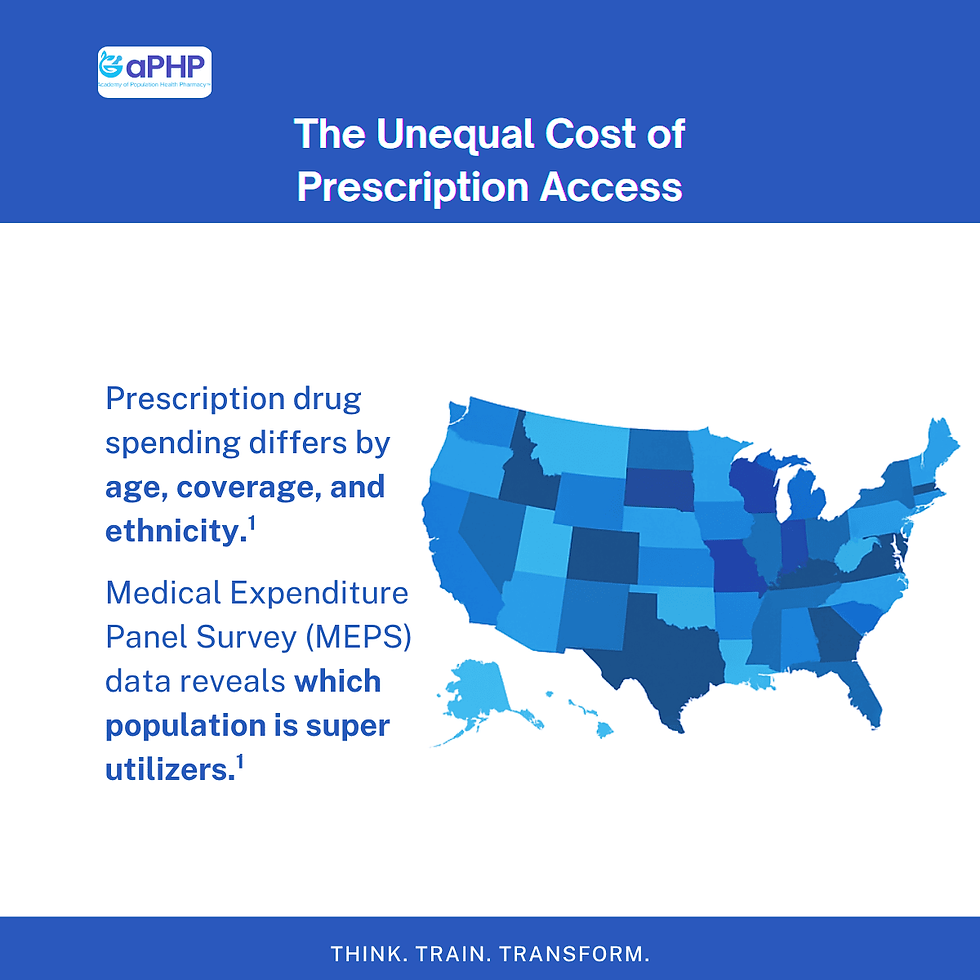
Pharmacy Strategies for
Reducing Health Disparities
Pharmacists reduce health disparities in their respective communities through various approaches. Technological advancements and the expanding roles of pharmacists have made this possible.
Here are some proven strategies pharmacists use to reduce health disparities:
Activating Patient Assistance Programs (PAPs).
Patient assistance programs (PAPs), typically sponsored by pharmaceutical companies and supported by hospitals or non-governmental organizations (NGOs), help underinsured or uninsured patients access needed medications at low or no cost.
Knowing when, where, and how to activate these programs is essential. Each PAP has specific eligibility requirements, enrollment processes, and medication coverage terms.
Pharmacists play a crucial role by identifying eligible patients, understanding program details, and initiating enrollment with the patient's consent. In doing so, they help reduce cost-related barriers to treatment and improve access to medication for those most at risk.
Actively Advocating for Health Equity.
Pharmacists pledge in their oath to promote inclusion, embrace diversity, and advocate for justice to advance health equity.³
By communicating with patients and identifying the root causes of disparities, pharmacists advocate for change through policy involvement, community partnerships, and collaboration with other healthcare professionals to support equitable access to care and resources.
In advancing equity, pharmacists fulfill their professional responsibility while improving population health across underserved and high-risk communities.
Addressing Cultural Incompetence.
Cultural competence is essential, particularly for pharmacists who frequently have direct patient contact. It involves understanding how a person’s or society’s cultural beliefs influence their health decisions.
Cultural incompetence must be addressed and eliminated in pharmacy practice to reduce health disparities.
This is achieved by understanding the cultural beliefs of the community you serve, recognizing the cultural diversity of individual patients, and providing informed counseling tailored to each person.
To learn more, check out our blog article titled, 8 Best Ways to Increase Cultural Competence in Pharmacy Practice.
Encouraging the Use of Telepharmacy Services.
Telepharmacy services utilize telecommunication technology to deliver pharmaceutical care to individuals residing in rural and underserved communities.
They are also helpful for patients with limited access to pharmaceutical care due to the severity of their health, such as reduced mobility (as seen in older adults).
The role of pharmacists in reducing health disparities among this group is to engage them using available telepharmacy services. This may also include training older adults to use services or platforms effectively.
Organizing Community Outreaches.
Community outreach programs help bridge health literacy gaps that contribute to increased health disparities in underserved communities. Education is a critical component of health equity, as it empowers patients to make informed decisions about their health and improves medication adherence.
To ensure outreach efforts are practical and culturally relevant, pharmacists can begin by conducting community health needs assessments, attending town halls, or engaging with local organizations. These population health strategies enable pharmacists to gather real-time insights into the barriers, beliefs, and social factors affecting the communities they serve.
Pharmacist-led outreach should include collaboration with trusted community leaders and the use of culturally tailored materials that reflect the community’s values, language, and literacy levels. In this way, pharmacists reduce health disparities by transforming care access into a two-way conversation that promotes inclusivity, trust, and shared understanding.

Offering Point-of-Care Testing to Underserved Communities.
Offering point-of-care testing (POCT) in underserved communities enhances access to healthcare services, helping to reduce health disparities.
For example, people living in rural communities often have limited access to medical services, including pharmaceutical services. Pharmacists are able to organize outreach programs to assist these communities with POCT services.
This provides underserved populations with greater access to healthcare, enabling them to be tested, receive results promptly, and ensuring that high-risk individuals are identified and treated in a timely manner.
Providing Personalized Medication Counseling.
A key aspect of the definition of health disparities is that it emphasizes avoidable differences in an individual’s health outcomes.
Differences in health outcomes also result from a lack of understanding of patients' needs.
Every patient, regardless of their social group, has unique medical needs. A pharmacist’s ability to offer personalized medication counseling to each patient improves their health outcomes, which are heavily influenced by their treatment regimen, including the medications they take.
Using Memes to Bridge Health Literacy Gaps.
Memes may seem unconventional, but they are a surprisingly effective tool for conveying complex medical information in an engaging and accessible way.
It is a creative idea that utilizes humor to engage with patients and direct their attention to the information they may need.
According to a study, factual memes help increase health literacy, especially among socially active vulnerable groups, because memes are easily shared across social media platforms.¹⁵
However, when using memes, it is essential to consider culturally acceptable language, the use of large, clear fonts, and inclusive images.
Using Language Interpretation Services.
Language barriers are a significant cause of health disparities, directly affecting communication between pharmacists and patients, which leads to inaccurate and unsatisfactory service.
However, language interpretation services help eliminate this barrier and significantly reduce health disparities resulting from language barriers.
Language interpretation services include human interpreters and sign language for people with hearing impairments.
From Vision to Impact: aPHP’s Role in Reducing Health Disparities
At aPHP, our mission is grounded in a pharmacist-led approach that integrates clinical expertise, data-driven strategies, and public health principles to drive productive change.
Through this model, aPHP focuses on improving access to medication, enhancing adherence, and reducing health disparities. (For a deeper dive into the concept of population health pharmacy, see [Top Population Health Pharmacists Adherence Strategies].)
This mission is deeply personal to Dr. La Kesha Y. Farmer, whose journey in population health began with a simple yet profound question:
“How might I drive meaningful change in healthcare,
improving outcomes for underserved populations while advancing equitable solutions for all pharmacy patients?”
This question laid the foundation for a career focused on closing care gaps through innovative approaches, expanding the pharmacist’s role beyond rigid expectations, and driving measurable improvements in population health pharmacy outcomes.
The following sections offer an in-depth examination of our founder’s journey and its impact on her vision for the future of pharmacy care.
Lived Experience as a Catalyst for Pharmacy Strategy
Living as a Black person in America means navigating systems designed with barriers rather than bridges. It means understanding, firsthand, the weight of being unheard, overlooked, and forced to advocate for what is often taken for granted, equitable care.
This lived experience fuels my work, driving me to go beyond surface-level interventions and truly meet patients where they are.
Having a disabled sister exposed me to the harsh disparities that individuals with disabilities face. As a population health pharmacist, I made it a priority to integrate disability-focused services into my program development, ensuring these patients receive the support they deserve.
Growing up with a Mexican stepfather deepened my understanding of Latinx culture and the distinct healthcare challenges within this community.
My Spanish speaking skills became a valuable asset, enabling me to foster trust and deliver care that extended beyond medication management.
Sometimes, meaningful care meant spending extra time on the phone addressing non-medication concerns, ensuring patients felt seen, heard, and supported.
These moments reinforced clinical recommendations, strengthened trust, and demonstrated that real population health is built on relationships, prescriptions, and accessibility.
By translating experience into action, I bridge gaps in care, uplift marginalized communities, and ensure that pharmacy-driven solutions are rooted in equity, understanding, and lived reality.
Integrating SDOH to Reduce Pharmacy Care Gaps
Integrating social determinants of health (SDOH) into pharmacy program development became a cornerstone of my strategy to reduce health disparities and drive productive change.
As a former SDOH specialist of a population health clinical pharmacy team, my research-backed insights guided analytics, equity, corporate, and statewide initiatives in integrating pharmacy-led interventions into broader population health management goals.
While overseeing a HEDIS Medicaid Clinical Pharmacy Adherence Program, I proactively sought guidance from a national SDOH advisor to enhance patient outcomes.
He noted that pharmacy teams are typically asked to assist with rolling out initiatives, but this was the first time a pharmacist had proactively reached out to ask how to build one.
With this mindset, I bridged the gap between corporate teams unfamiliar with California’s healthcare landscape and local initiatives, such as CAL-AIM, ensuring that pharmacy-driven strategies aligned with statewide efforts to reduce health disparities.
Improving health outcomes requires more than medication management. Lowering hemoglobin A1c levels, for example, necessitates addressing external barriers, such as food insecurity. Ensuring access to nutritious food becomes just as critical as optimizing medication regimens.
By facilitating interdisciplinary partnerships among population health nurses, physicians, social workers, and pharmacists, I strengthened care coordination and case resolution efforts, thereby reinforcing the role of pharmacists in whole-person care models.
Through research-driven solutions and strategic collaboration, I expanded pharmacy’s impact beyond clinical care, ensuring that reducing health disparities remained at the forefront of healthcare innovation.
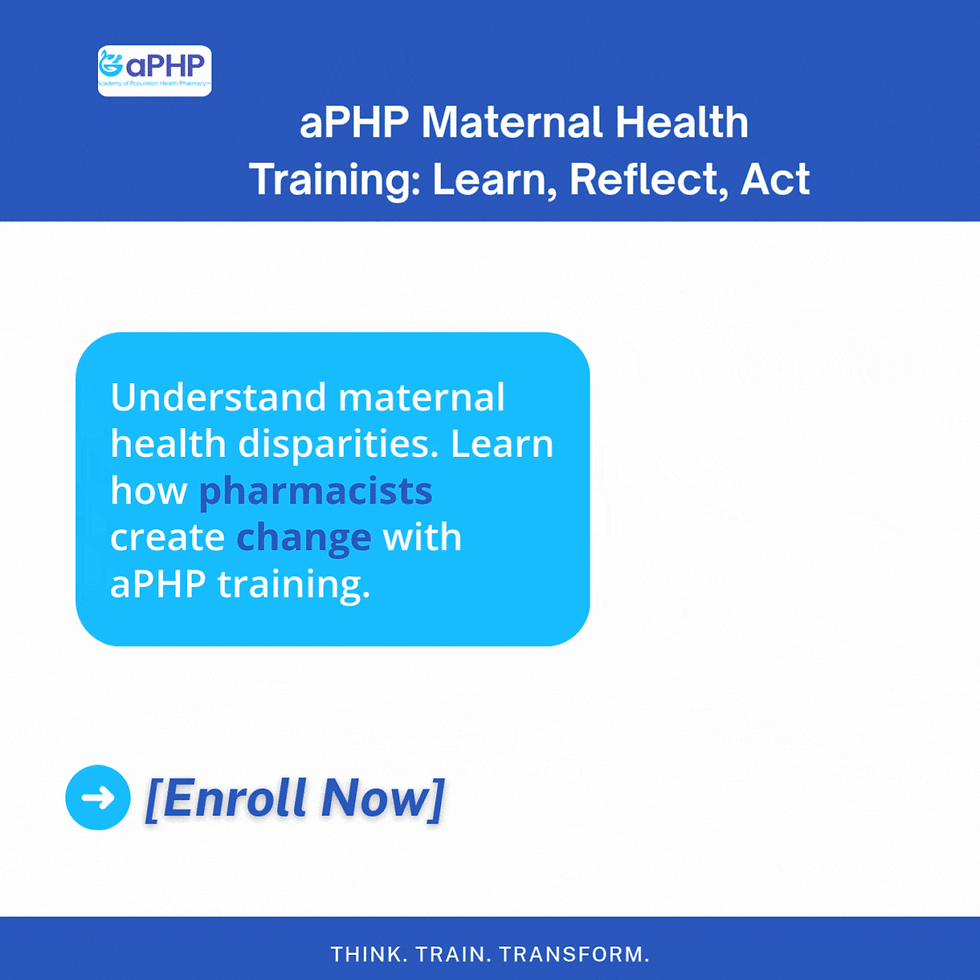
Pharmacist Advocacy to Improve Health Equity Outcomes
My commitment to health equity led me to advocate for pharmacist-led training during my role as a managed care clinical pharmacist. These trainings focused on addressing persistent Black maternal mortality and promoting trauma-informed care for American Indian and Alaska Native (AI/AN) communities.
The goal was to increase awareness of historical trauma, medical mistrust, and the systemic healthcare challenges faced by Black and Native American populations. This mission continues today through aPHP’s equity-centered training programs.
Yet, carrying this work forward proved challenging. The pharmacy “team” I was assigned to lacked solidarity. The senior “director” and, by extension, the team lacked cohesion, direction, and motivation. Meanwhile, the nurses leading the maternal health program resisted pharmacist collaboration and showed little regard for the needs of the people they were serving.
Still, stepping aside never aligned with my values. Unlike those overseeing the maternity care program, the women dying looked like me, sounded like me, and shared similar educational and lived experiences. This extended beyond professional duty; it was deeply personal.
For me, advocating for pharmacist involvement in maternal health became essential, as it reflects the vital role pharmacists play in closing care gaps and improving outcomes for at-risk populations. Moreover, minority pharmacists from underserved populations are best equipped to serve the needs of minority populations. This point is often overlooked, but it matters.
Pharmacists Confronting Systemic Disparities in Healthcare Access
I founded aPHP to showcase the immense value and resourcefulness of pharmacists while reminding communities of the central care role pharmacists held before the 1951 Durham-Humphrey Act restricted their professional autonomy.
aPHP exists to create real impact, working at every level to reduce barriers to pharmacoequity and expand access to pharmacist-led, cost-effective care. Pharmacoequity refers to ensuring that all patients, regardless of their background or resources, receive, access, and utilize optimal medications to manage their health effectively.¹¹
Despite their expertise, pharmacists continue to face systemic disparities, both within the profession and across the broader healthcare system. Pharmacy residency elitism deepens this divide, limiting opportunities, fragmenting professional identity, and weakening the profession as a whole.
In my own experience, I have consistently trained pharmacy residents, set the standard they followed, and helped them secure jobs rather than the other way around. Among my peers, I have witnessed the same. The dysfunctional team I described earlier was “directed” by a pharmacist who had completed a PGY2 residency, yet relied on me to speak on their behalf at directors' and upper-level meetings.
Still, the profession continues to place greater prestige and opportunity in the hands of residents, often at the expense of equally, if perhaps more skilled, residency-independent pharmacists. ASHP continues to advocate for residency-trained hiring preferences; however, I have seen no evidence to support the claim that residents demonstrate higher-level competency, only opinion.
Additionally, Black minority pharmacists face steeper barriers in the residency selection process, which perpetuates persistent disparities and a lack of representation. They are less likely to secure residency positions and often lack access to the mentorship networks that support application success and post-residency advancement.²² ²⁵
These structural disadvantages further concentrate opportunity among the already privileged, reinforcing a hierarchy that excludes equally skilled pharmacists from communities that need them most. This bias fosters division and weakens solidarity. It sidelines competent pharmacists based on credentials rather than contributions.
aPHP challenges this status quo by equipping all pharmacists, whether residency-trained or residency-independent, with the tools, training, and strategies to reclaim their influence in healthcare, particularly in service to those most in need.
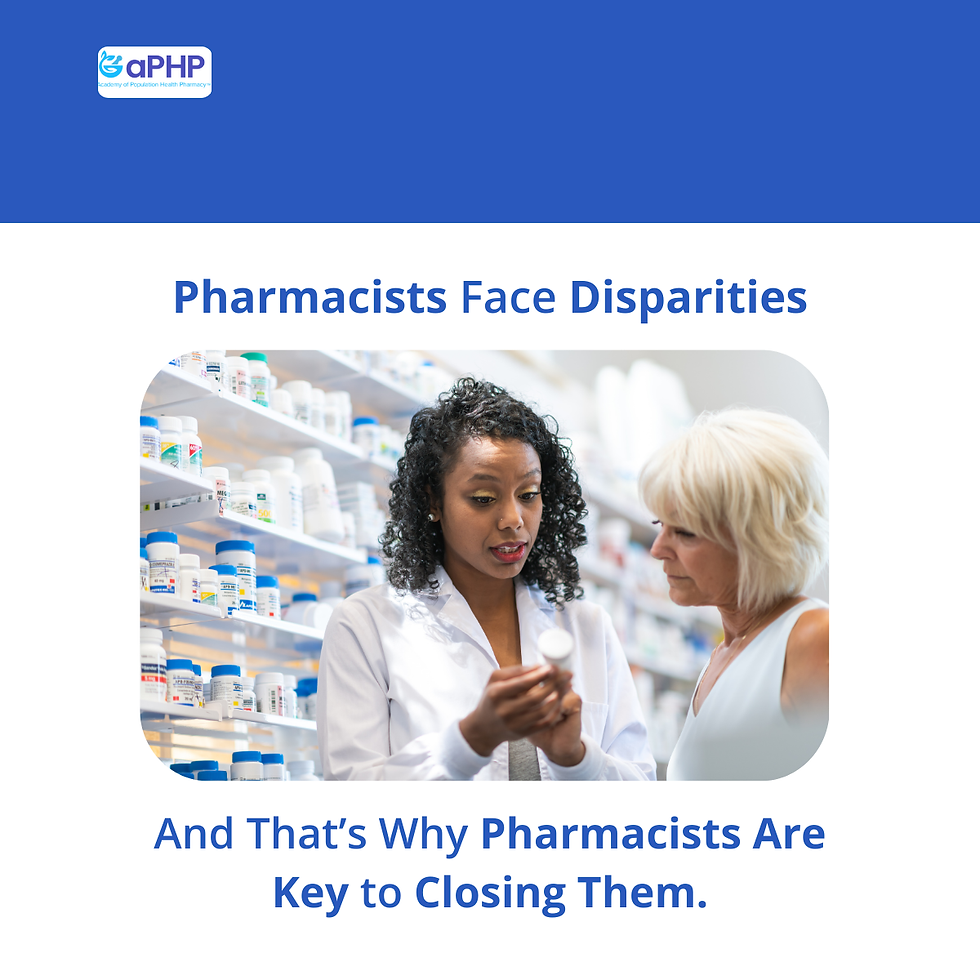
Pharmacists Leading Change in Population Health & Equity
The impact of health disparities on patients must be taken seriously. From increased medication non-adherence to higher mortality rates, these disparities extend beyond individuals, affecting families, communities, and society as a whole.
Pharmacists play a crucial role in reducing health disparities due to their unique position within the healthcare system.
By leveraging their expertise, they address systemic barriers, advocate for policy reforms, and implement pharmacist-led interventions that improve medication access and adherence. Every opportunity should be leveraged to advance health equity and enhance patient outcomes.
Our Founder’s story exemplifies how pharmacists make a meaningful difference in patient care. Lived experience provides an unmatched ability to connect with patients, build trust, and drive outcomes through culturally competent, patient-centered care.
By recognizing the realities that shape health disparities, pharmacists strengthen their role as advocates and leaders in transforming healthcare.
But reducing health disparities does require ongoing collaboration.
Pharmacists, please continue to collaborate with healthcare professionals, community leaders, and fellow pharmacists, recognizing that interdisciplinary partnerships are essential to optimizing patient outcomes and ensuring equitable access to healthcare.
Through commitment, innovation, and collective action, pharmacists strengthen healthcare systems to ensure the fair distribution of resources that influence optimal health outcomes, thereby ensuring access to quality care for all.
References
Agency for Healthcare Research and Quality (AHRQ). "Concentration of Healthcare Expenditures and Selected Characteristics of People with High Expenses, United States Civilian Noninstitutionalized Population, 2018-2022." AHRQ.gov, 2018, www.meps.ahrq.gov/data_files/publications/st560/stat560.shtml. Accessed 14 July 2025.
Allen et al. "Ten Recommendations to Increase Black Representation Within Pharmacy Organization Leadership." American Journal of Health-System Pharmacy, Volume 78, Issue 10, 15 May 2021, Pages 896–902, https://doi.org/10.1093/ajhp/zxab077.
American Pharmacist Association (APhA)."Oath of a Pharmacist." www.pharmacist.com, www.pharmacist.com/About/Oath-of-a-Pharmacist. Accessed 14 Jul 2025.
American Society of Clinical Laboratory Specialists (ASCLS). "Point of Care Testing." ASCLS, 22 Dec. 2012, ascls.org/point-of-care/. Accessed 14 July 2025.
American Society of Health System Pharmacists (ASHP). "The Face of Diversity in Pharmacy." ASHP, 3 Dec. 2021, www.ashpmidyeardailynews.org/ashp-midyear-2021/article/21928336/the-face-of-diversity-in-pharmacy. Accessed 14 July 2025.
Blackstock, Oni. "The Roots of Medical Mistrust." 2020. PDF. https://californiaptc.com/wp-content/uploads/2020/10/Roots-of-Medical-Mistrust.pdf. Accessed 24 Feb 2025.
Braveman P, Arkin E, Orleans T, Proctor D, Plough A. "What is Health Equity?" Robert Wood Johnson Foundation, 2017. Accessed 14 Jul 2025. https://www.rwjf.org/en/library/research/2017/05/what-is-health-equity-.html.
Centers for Disease Control and Prevention (CDC). "Health Disparities." Adolescent and School Health, 6 Dec. 2024, www.cdc.gov/healthy-youth/health-disparities/?CDC_AAref_Val=www.cdc.gov/healthyyouth/disparities/index.htm. Accessed 14 Nov 2024.
CDC Archives. "Rural Americans at Higher Risk of Death From Five Leading Causes." Archive.cdc.gov, archive.cdc.gov/#/details?url=www.cdc.gov/media/releases/2017/p0112-rural-death-risk.html. Accessed 14 Nov 2024.
Centers for Medicare and Medicaid Services (CMS). "Health Equity." Cms.gov, 2024, www.cms.gov/medicare/quality/nursing-home-quality-improvement/value-based-purchasing-snf-vbp-program/health-equity. Accessed 14 Nov 2024.
Chalasani, Rohan, et al. "Pursuing Pharmacoequity: Determinants, Drivers, and Pathways to Progress." Journal of Health Politics Policy and Law, vol. 47, no. 6, 14 July 2022, pp. 709–729, https://doi.org/10.1215/03616878-10041135. Accessed 14 Jul 2025.
Crenshaw, K.W. "Mapping the Margins: Intersectionality, Identity Politics, and Violence Against Women of Color." Stanford Law Review. 1991;43(6):1241–1299. https://doi.org/10.2307/1229039. Accessed 14 Jul 2025.
Frieden, Thomas R, et al. "CDC Health Disparities and Inequalities Report — United States, 2013 Morbidity and Mortality Weekly Report." 2013. https://www.cdc.gov/mmwr/pdf/other/su6203.pdf. Accessed 14 Jul 2025.
Gwatkin, Davidson R. "Trends in Health Inequalities in Developing Countries." The Lancet Global Health, 2017 Apr;5(4): e371-e372. https://doi.org/10.1016/S2214-109X(17)30080-3. Accessed 14 Jul 2025.
Headley, S.A., et al. "Using Memes to Increase Health Literacy in Vulnerable Populations." American Journal of Health Education, 2021 Dec: 53(1). https://doi.org/10.1080/19325037.2021.2001777.
Healio. "EMS Response to Cardiac Arrest Differs in Majority Black/Hispanic vs. White Catchment Areas." Healio.com, 9 June 2025, www.healio.com/news/cardiology/20250609/ems-response-to-cardiac-arrest-differs-in-majority-blackhispanic-vs-white-catchment-areas?utm_source=selligent&utm_medium=email&utm_campaign=20250702CARD&utm_content=20250702CARD. Accessed 14 July 2025.
Hurley-Kim K, Unonu J, Wisseh C, Cadiz C, Knox E, Ozaki AF, Chan A. "Health Disparities in Pharmacy Practice Within the Community: Let's Brainstorm for Solutions." Front Public Health. 2022 Apr 8;10:847696. https://doi.org/ 10.3389/fpubh.2022.847696.
Institute of Medicine (US) Committee on Understanding and Eliminating Racial and Ethnic Disparities in Health Care. "Unequal Treatment: Confronting Racial and Ethnic Disparities in Health Care." National Academies Press; 2003. https://www.ncbi.nlm.nih.gov/books/NBK220358/.
March of Dimes. "Maternity Care Deserts Report." Marchofdimes.org, 2022, www.marchofdimes.org/maternity-care-deserts-report-2022.
National Conference of State Legislatures. "Health Disparities Overview." Www.ncsl.org, 10 May 2021, www.ncsl.org/health/health-disparities-overview. Accessed 14 Nov 2024.
Organisation for Economic Co-operation and Development & World Health Organization. (2003). "Poverty and Health." World Health Organization. https://iris.who.int/handle/10665/42690. Accessed 14 Jul 2025.
Pharmacy Times. "Expert: Black Students Face Unique Challenges When Entering, Considering Pharmacy Residency Programs." Pharmacy Times, 11 Nov. 2023, www.pharmacytimes.com/view/expert-black-students-face-unique-challenges-when-entering-considering-pharmacy-residency-programs. Accessed 14 July 2025.
Sherrell, Zia. “Social Determinants of Health: Definition, Influence, Outcomes.” Www.medicalnewstoday.com, 2021, www.medicalnewstoday.com/articles/social-determinants-of-health. Accessed 14 Nov 2024.
Testing.com. "Point-of-Care Testing." Testing.com, 27 Jan. 2021, www.testing.com/articles/point-of-care-testing/. Accessed 14 Nov 2024.
The Pharmaceutical Journal. "What Do Black Pharmacists Say about Their Professional Progress?" The Pharmaceutical Journal, 28 Oct. 2024, pharmaceutical-journal.com/article/letters/what-do-black-pharmacists-say-about-their-professional-progress. Accessed 14 July 2025.
Tyndall, Megan. "What Is the Difference between Health Equity, Disparities, and Inequities?" CHESS Health Solutions, 14 Feb. 2023, www.chesshealthsolutions.com/2023/02/14/what-is-the-difference-between-health-equity-disparities-and-inequities/. Accessed 14 Nov 2024.
United Nations. "The 17 Sustainable Development Goals." United Nations, 2025, sdgs.un.org/goals. Accessed 14 Nov 2024.
University of Minnesota Extension. "Historical Trauma and Cultural Healing." Extension.umn.edu, extension.umn.edu/trauma-and-healing/historical-trauma-and-cultural-healing#what-is-historical-trauma%3F-378610. Accessed 24 Feb 2025.
World Health Organization (WHO). "Environmental Health Inequalities in Europe Second Assessment Report." 2019. https://iris.who.int/bitstream/handle/10665/325176/9789289054157-eng.pdf. Accessed 14 Jul 2025.
World Health Organization. "Health Inequities and Their Causes." World Health Organization, 22 Feb. 2018, www.who.int/news-room/facts-in-pictures/detail/health-inequities-and-their-causes. Accessed 14 Nov 2024.
WHO. "Provisional Agenda Item 2: Poverty and Health Report by the Director-General." 1999. https://apps.who.int/gb/ebwha/pdf_files/EB105/ee5.pdf. Accessed 14 Jul 2025.







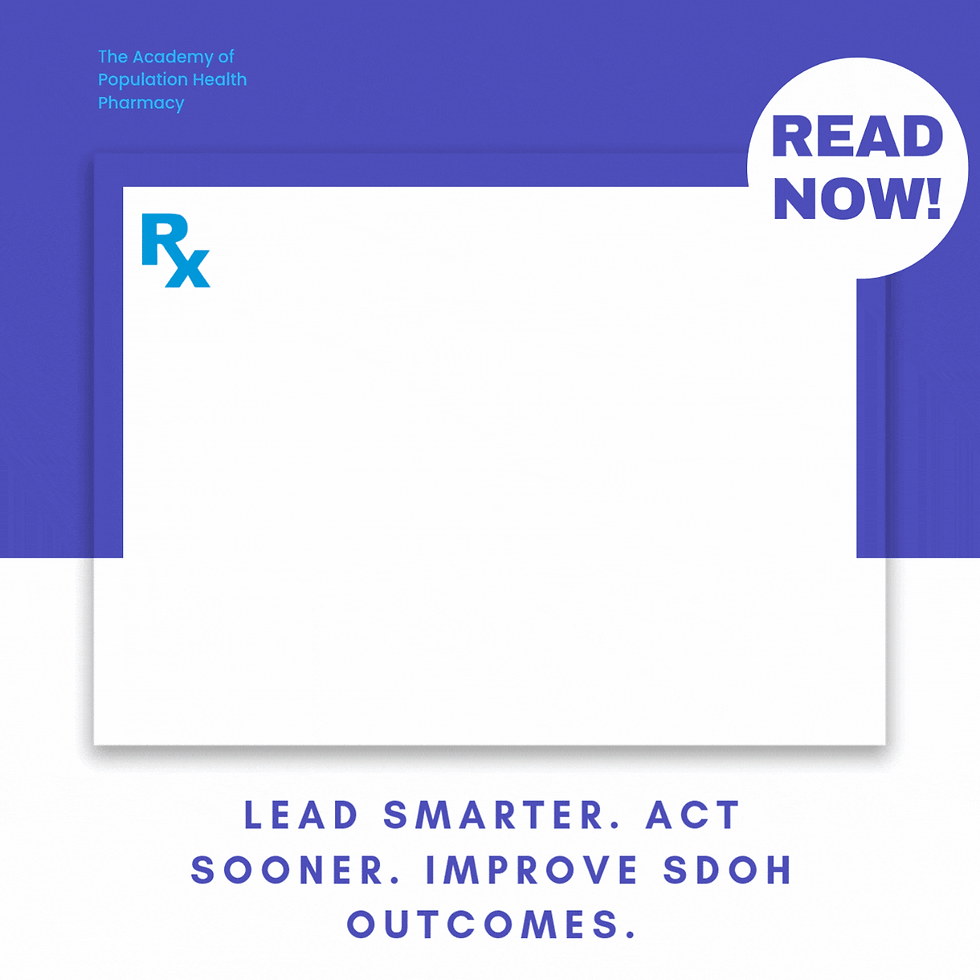

Comments